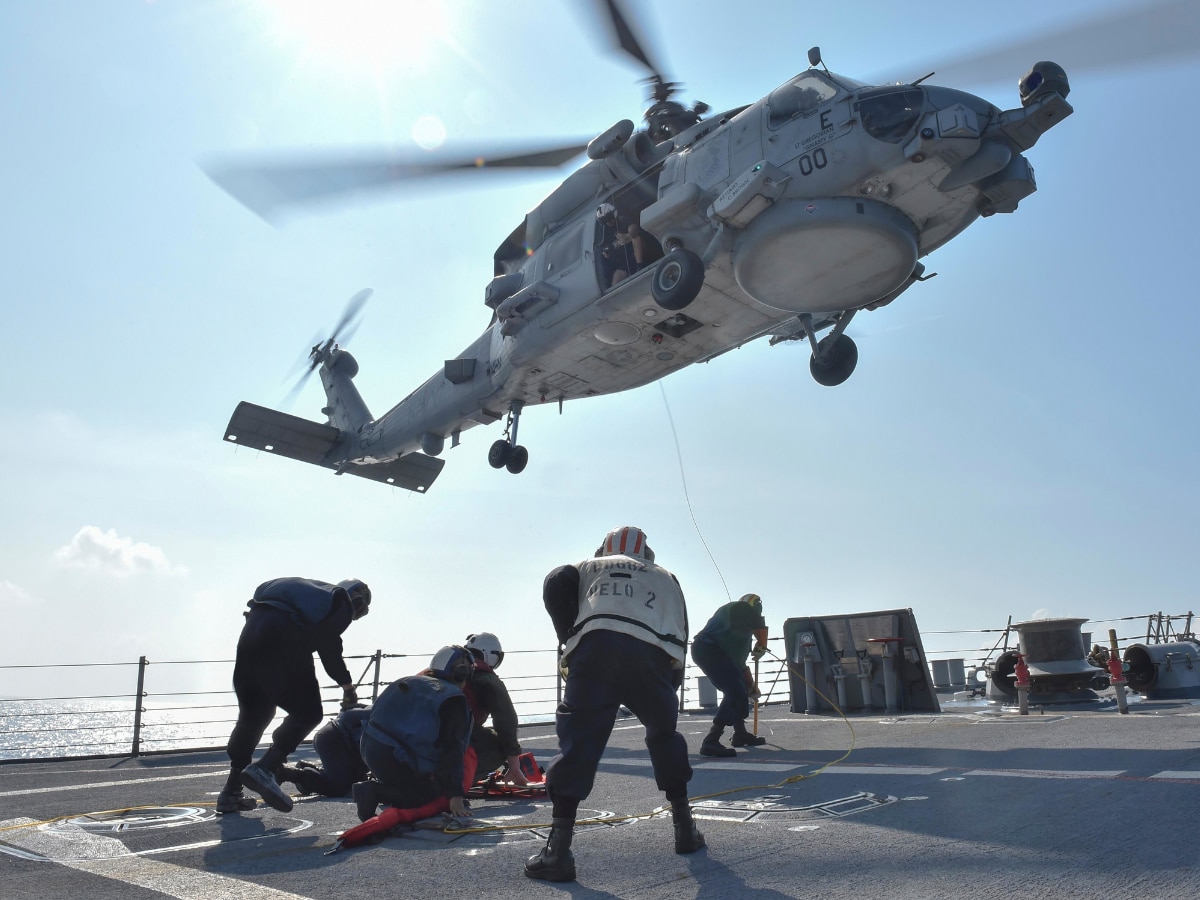A U.S. Navy MH-60R Seahawk helicopter crashed into the waters of San Diego Bay during a routine training exercise on Thursday night. The incident occurred shortly after 6:30 p.m., with all six crew members on board surviving the crash.

Successful Rescue Amidst Training Mishap
According to Cmdr. Beth Teach of the Naval Air Force Pacific Fleet, a safety boat, a standard protocol during such exercises, was on location, facilitating the swift rescue of the crew. While the exact conditions of the crew members were not immediately disclosed, Navy officials indicated no awareness of critical or life-threatening injuries. The successful rescue operation showcased the effectiveness of safety measures in mitigating potential harm during training mishaps.
Crash Site and Response Efforts
The crash site in Coronado across an inlet from San Diego prompted immediate responses from local authorities, including the Fire Department and the U.S. Coast Guard. The collaborative efforts ensured a quick and efficient reaction to the emergency. As investigations into the cause of the crash are underway, initial reports have not provided conclusive information. The incident raises questions about the circumstances surrounding the training exercise and will be subject to a thorough inquiry to determine the contributing factors. The involvement of a safety boat and the coordinated response demonstrate the preparedness of both Navy personnel and local agencies to manage unforeseen events, emphasizing the importance of safety protocols in military training exercises.

MH-60R Seahawk and Its Multifaceted Role
The MH-60R Seahawk, belonging to Helicopter Maritime Strike Squadron 41, serves as a critical asset for the U.S. Navy. Based at Naval Air Station North Island on the Coronado peninsula, the fleet replacement squadron trains aircrews on the MH-60R Seahawk. While primarily designed for anti-submarine warfare, this versatile helicopter is equipped to perform various missions, including surveillance and search-and-rescue operations. Its significance in naval operations underscores the need for comprehensive training exercises to ensure the readiness and proficiency of air crews operating these advanced aircraft. The incident, though unfortunate, highlights the resilience of both the crew and the training protocols in ensuring the safety of military personnel during operational exercises.